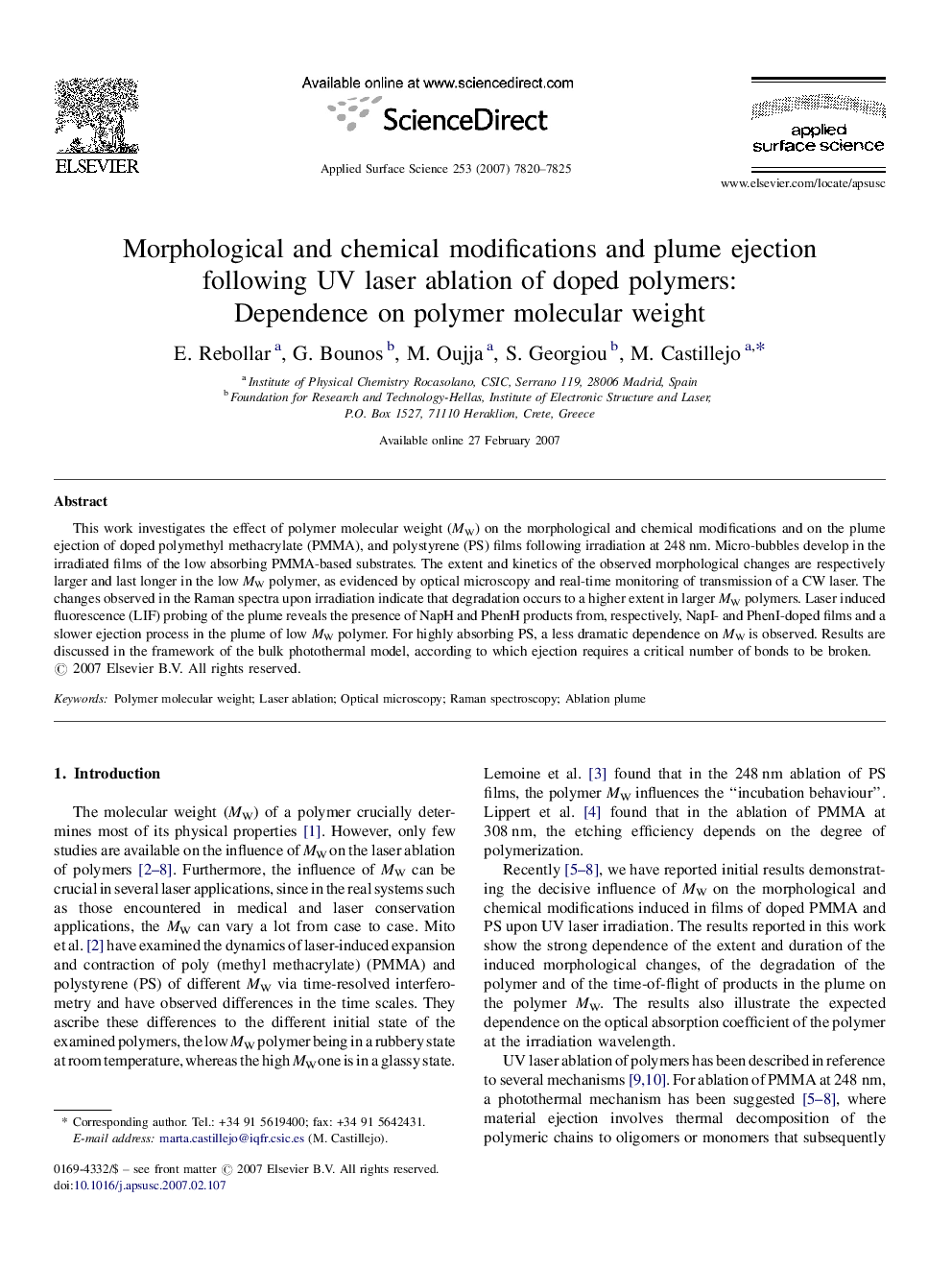| Article ID | Journal | Published Year | Pages | File Type |
|---|---|---|---|---|
| 5369575 | Applied Surface Science | 2007 | 6 Pages |
This work investigates the effect of polymer molecular weight (MW) on the morphological and chemical modifications and on the plume ejection of doped polymethyl methacrylate (PMMA), and polystyrene (PS) films following irradiation at 248Â nm. Micro-bubbles develop in the irradiated films of the low absorbing PMMA-based substrates. The extent and kinetics of the observed morphological changes are respectively larger and last longer in the low MW polymer, as evidenced by optical microscopy and real-time monitoring of transmission of a CW laser. The changes observed in the Raman spectra upon irradiation indicate that degradation occurs to a higher extent in larger MW polymers. Laser induced fluorescence (LIF) probing of the plume reveals the presence of NapH and PhenH products from, respectively, NapI- and PhenI-doped films and a slower ejection process in the plume of low MW polymer. For highly absorbing PS, a less dramatic dependence on MW is observed. Results are discussed in the framework of the bulk photothermal model, according to which ejection requires a critical number of bonds to be broken.
